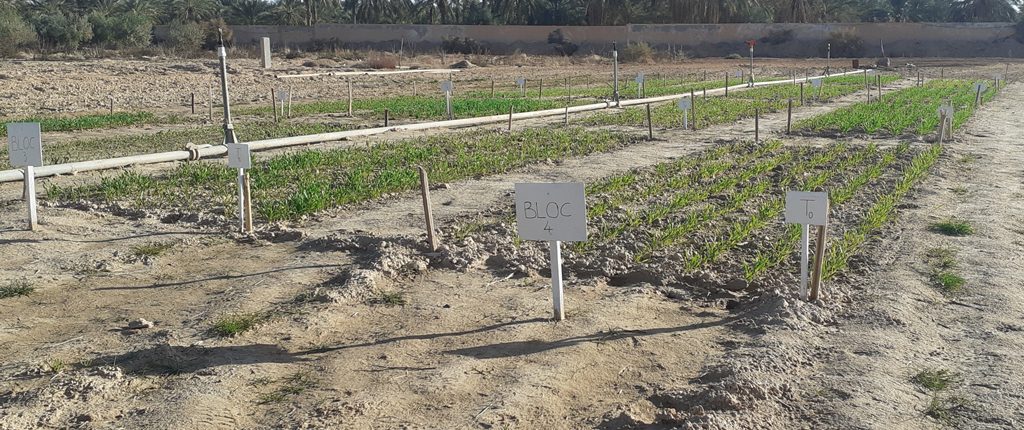General description
The Oued Righ region is located north of the Algerian Sahara. In this region, there is a vast set of palm groves surrounded by dunes. This region is bordered by the Ziban region to the north, to the east by the great dune alignments of the eastern erg, to the south by the oases of Ouargla and finally to the west by the depression of Dzioua. This region is known for the considerable development of its oases, which produce dates of excellent quality. These oases are distributed from north to south, from the important oasis of Ourirup to that of Témacine, over a length of about 150 km. The width of the zone varies between 20 and 30 km.
Climate context
The climate of Oued Righ is a hot desert climate of the Saharan type, characterized by very rare and irregular rainfall, by high temperatures with large daily and annual amplitudes and low relative humidity of the air.
Indeed, rainfall is very rare, the annual average is slightly above 50 mm for a number of rainy days of 25 days. These rains are of the stormy type characterized by a high intensity, thus generating significant floods which only persist for a few minutes. Winds are frequent in the Oued Righ region. In winter, westerly winds dominate. In spring, northeast winds dominate, while in summer, southwest winds dominate. In the region of Oued Righ, the maximum evapotranspiration presents a significant seasonal variation. The monthly potential evapotranspiration in winter is three times less than the monthly EP in summer.
Geological background
The parental material of the soils of Oued Righ is of mixed alluvial-colluvial and wind origin. The alluvium and colluvium come from the erosion of the encrusted level dating from the early Quaternary or the Mio-Pliocene. The successive phases of erosion and filling of the bottom of the valley are responsible for the textural heterogeneity observed in the deep horizons, in particular along the route of the chott.
If we admit that the drying up of the northern Sahara began after the Wurm glaciation, the placement of the soil materials dates from the Soltanian, but the upper horizons are largely of aeolian origin.
Edaphic context
The soil pedogenesis of the site is dominated by the action of groundwater and the salts it contains. Under equal conditions, the degree of development of the morphological characteristics of soils depends on the clay content (SOGETA-SOGHREA, 1969-1970).
The soils contain a very high proportion of gypsum crystals of all sizes (40% on average). The superficial and shallow horizons (less than 70 cm) are homogeneous. Their clay content varies from 5 to 10% and their texture is loamy sand or sandy loam (SOGETA-SOGHREA, 1969-1970). Also, most soils are salty or very salty, but there is no alkalinization of the absorbent complex. In fact, the type of salt is calcium sulphate up to 6 mmhos/cm, sodium chloride above. The ions present are chlorides and sulphates. The bicarbonate contents are always low. The carbonate contents are nil. Cations are represented by sodium. Calcium is in the form of gypsum and is therefore poorly soluble. Potassium content is still low. The pH is slightly alkaline and varies between 7.5 and 8.5. The organic matter content is very low and comes mainly from the manure applied in the palm grove.
In addition, the physical properties of the soils are characterized by a low apparent density of the soils in the regularly plowed surface horizons. It is around 1.25 with 75% of the results between 1.05 and 1.35. In the underlying horizons, it is slightly higher: it is around 1.30 with 75% of the results between 1.15 and 1.45. The total porosity of the surface horizons has values between 40 and 60%. In the deeper horizons, the porosity is lower than that of the surface horizons, with values between 30 and 45%.
Like the Kebili site, the Oued Righ site is an oasis ecosystem representative of many palm groves in the region.

